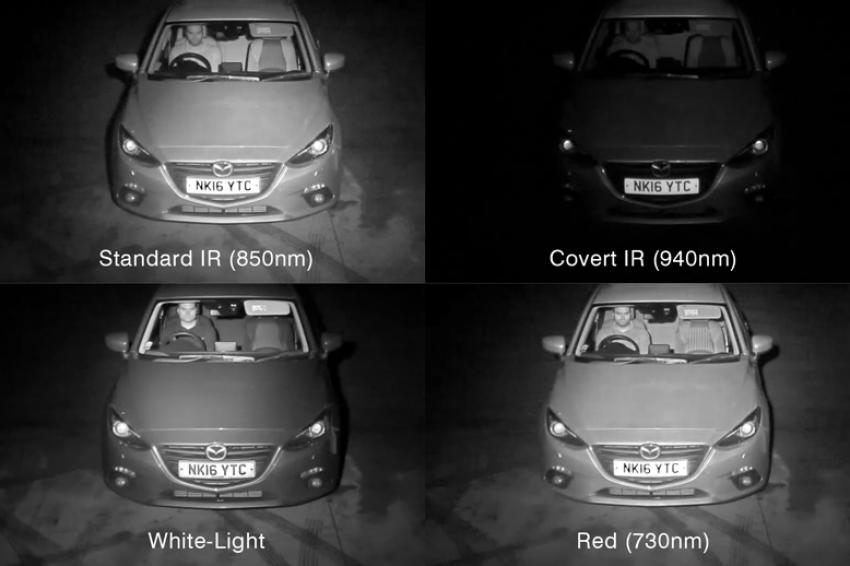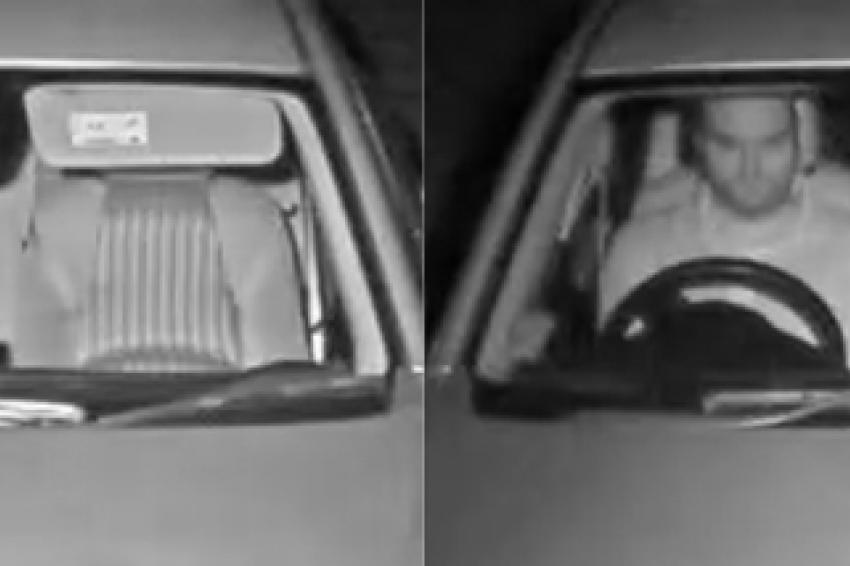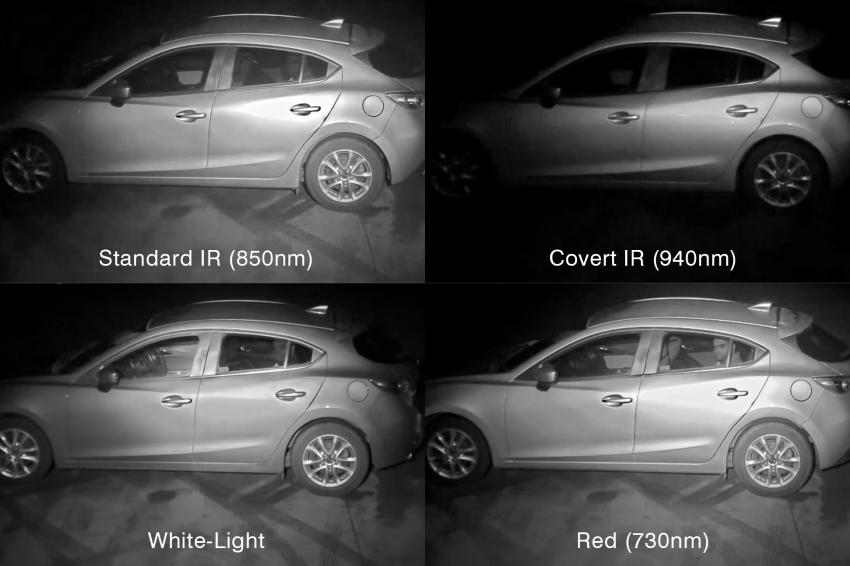730nm: The New Solution for Driver Recognition Results?
Raytec tested four different wavelengths of light
An increasing number of transport applications around the world are trying to identify drivers and passengers inside a vehicle. In this article, we explore the difficulties of seeing through the windscreen, and discuss how different wavelengths of light could help to overcome the issues.
Challenges of Seeing Through a Windscreen
Modern windscreens block out certain wavelengths of light to protect the occupants of the vehicle from ultraviolet (UV) rays and to keep the cabin cool by blocking Infra-Red (IR). However, the filters do not block all IR rays which means IR can still be used for these applications.
One option is to use more power, but this can be expensive and uneconomical.
Overcoming the Challenges
In a series of night-time tests using a high-performance camera, Raytec tested four different wavelengths of light (all using the same power) to see how well they performed. The wavelengths tested were standard IR (850nm), Covert IR (940nm), White-Light and Red (730nm).
Looking at image one, we can see that each type of light achieves different results. Although the power of each illuminator is the same, the different wavelength of each means varying levels of light are able to pass through the windscreen. Let’s summarise the results:
- With standard IR (850nm), the image shows a fairly good level of detail inside the vehicle, helped by the fact the camera is highly sensitive to this wavelength.
- Aside from the Covert IR (940nm), which delivers significantly worse images, at first glance, the other images do not appear to show a huge difference.
- However, when we zoom further in (see second image), we can see that 730nm does provide a greater level of detail.
In more challenging applications, perhaps when the car is moving at speed, the difference in quality is likely to be more pronounced.
Tinting is an additional challenge as it blocks even more light. In the UK, 75 percent of light must be able to pass through the windscreen, although other countries have more lenient laws. However, darker tints can generally be used on rear windows, which makes identifying passengers through rear windows particularly difficult. Let’s look at the results of our different wavelength illuminators on a tinted rear window.
In the third image, the results are more obvious as the 730nm wavelength provides the best results. We can summarise that; while image clarity can be improved by increasing the quantity of light, using a more appropriate wavelength can also impact the quality of an image. However, we also need to consider the impact of light on the driver.
Other Considerations
Ideally, the quality of images produced using 730nm could be achieved using an illuminator which gives off no visible light. In reality, as we move further down the spectrum, more light becomes visible to the driver.
Covert IR (940nm) gives off no visible light, but the images are poor. With standard IR (850nm) the quality of the images are good, but there is a visible red glow. Lastly, 730nm achieves excellent quality images with detail of the individual in the car, but there is a very obvious red glow.
Product Development
The deployment of driver and passenger recognition is a hot topic, and the uptake of these systems is very much application and country specific. While it is premature to claim that using 730nm illuminators will provide the best results for all driver and passenger recognition scenarios (more testing across a wider range of conditions is required to prove its effectiveness), the idea of using different wavelengths of light to provide improved results is certainly a topic for further exploration.
Contact
Raytec Ltd.
Unit 15 Wansbeck Business Park, Rotary Parkway
NE63 8QW Ashington, Northumberland
+44 (0) 1670 520055
+44 (0) 1670 819760











